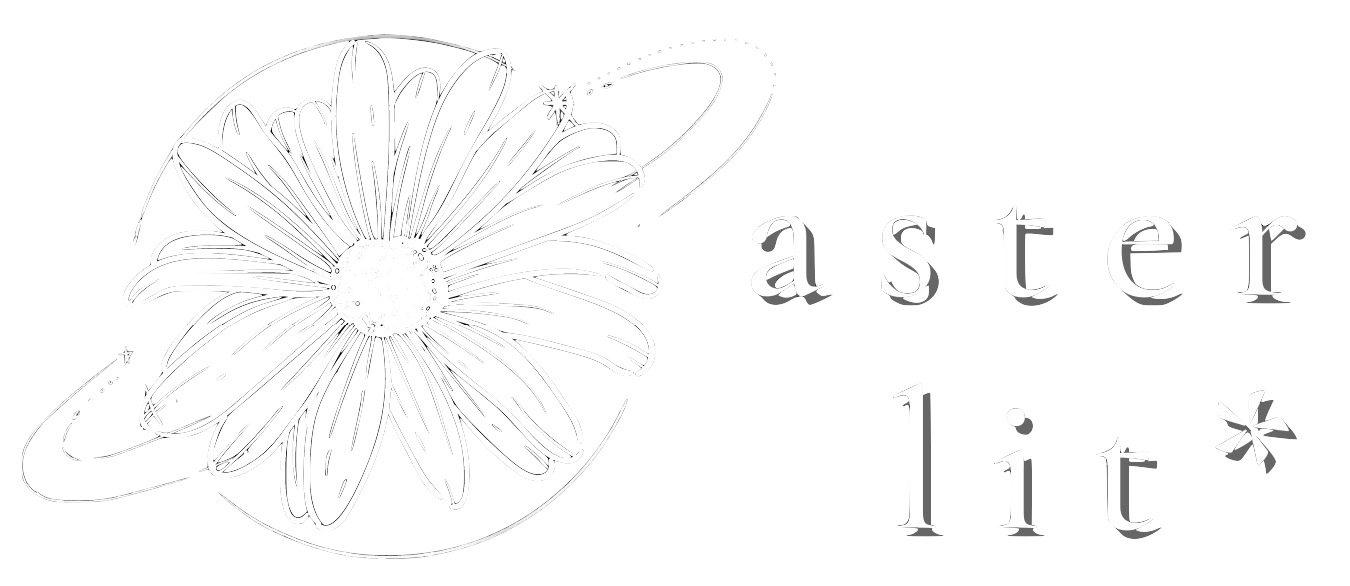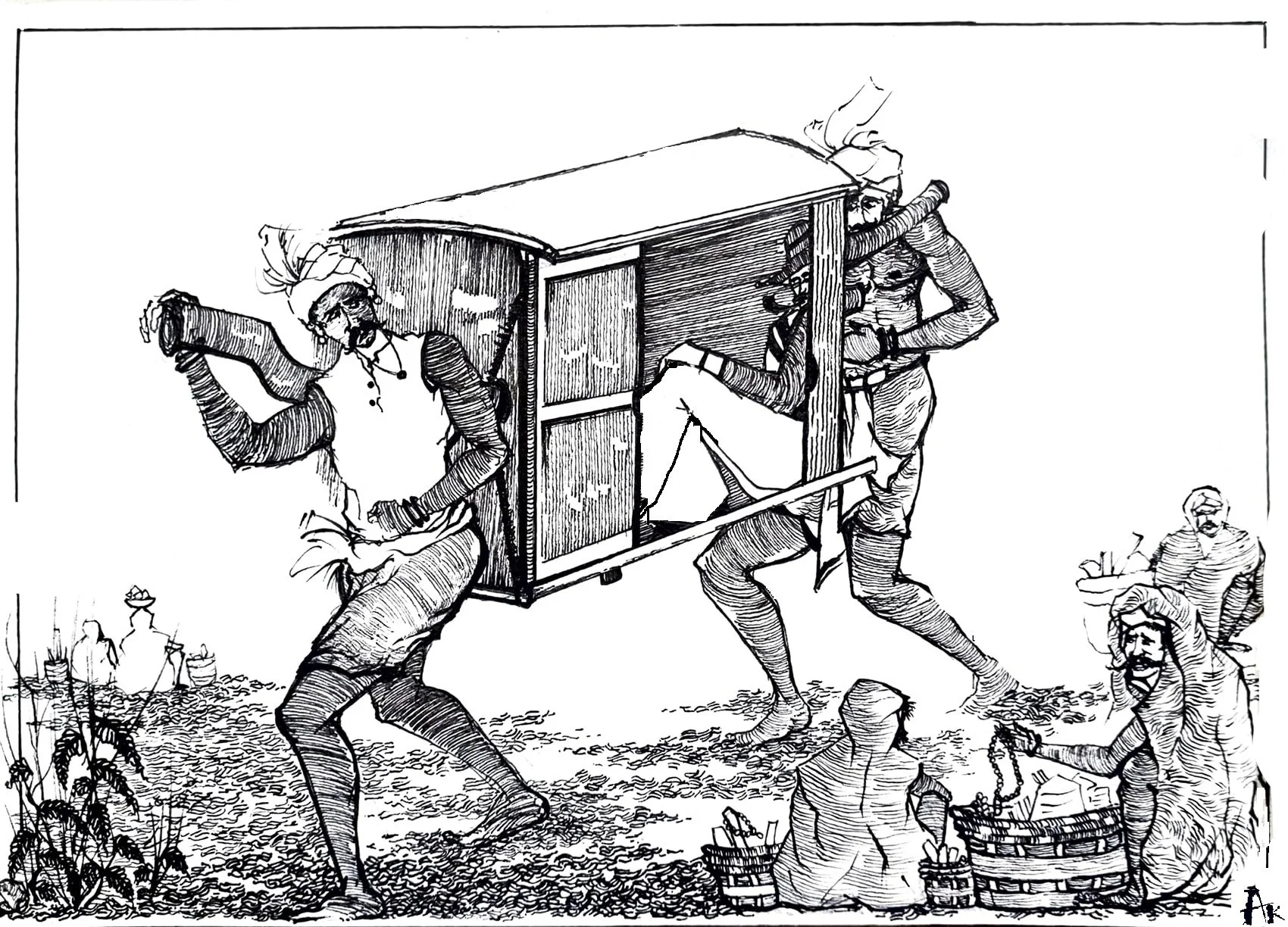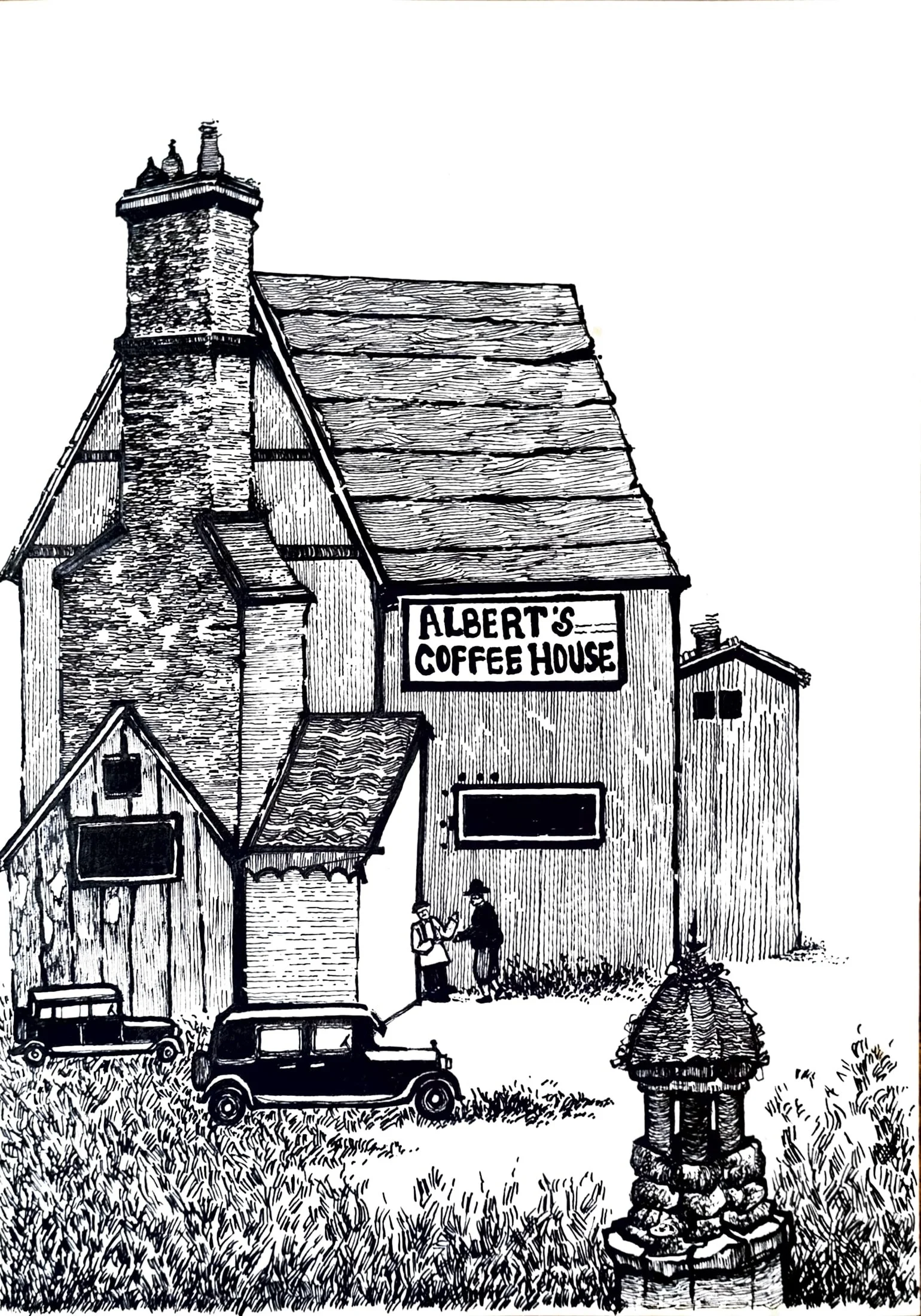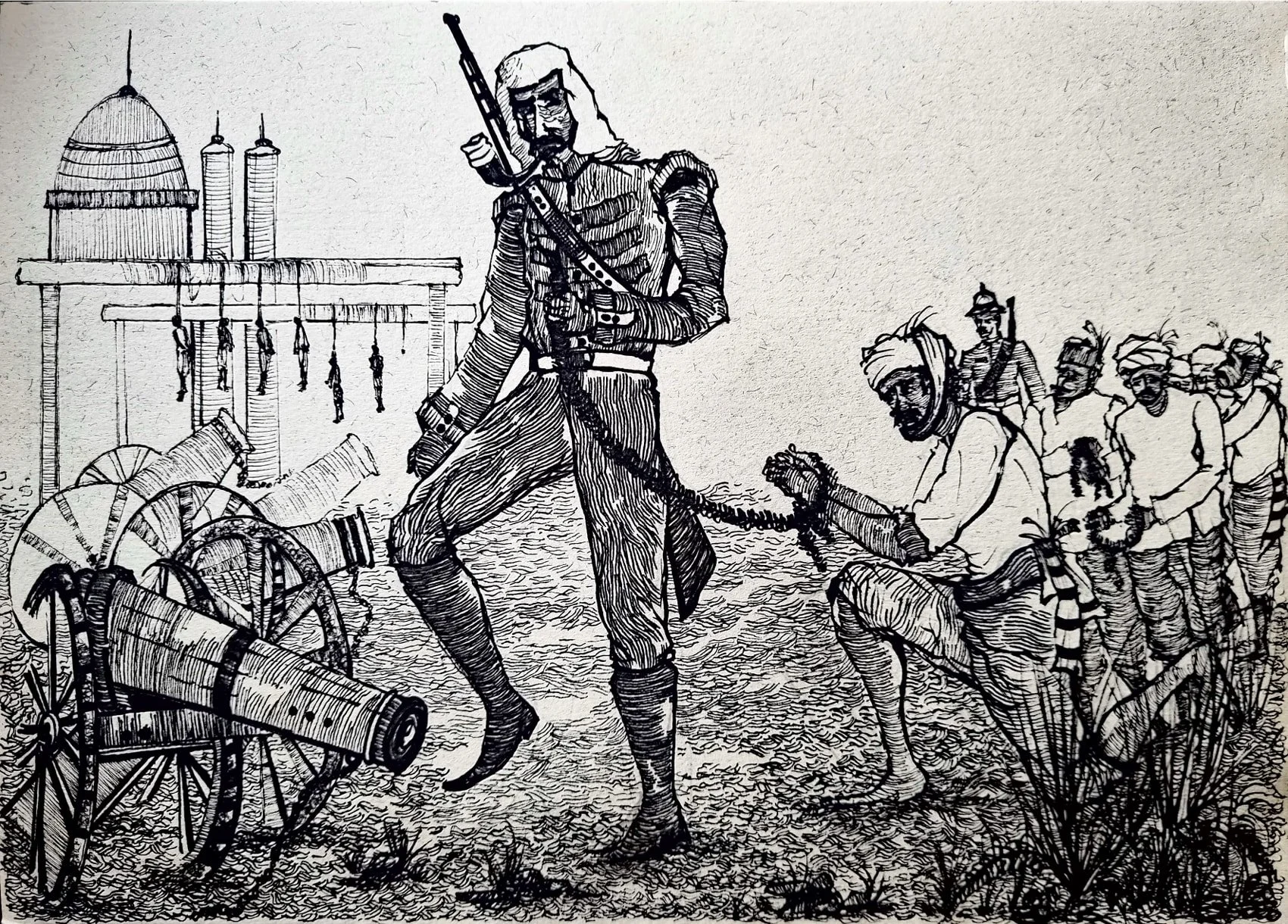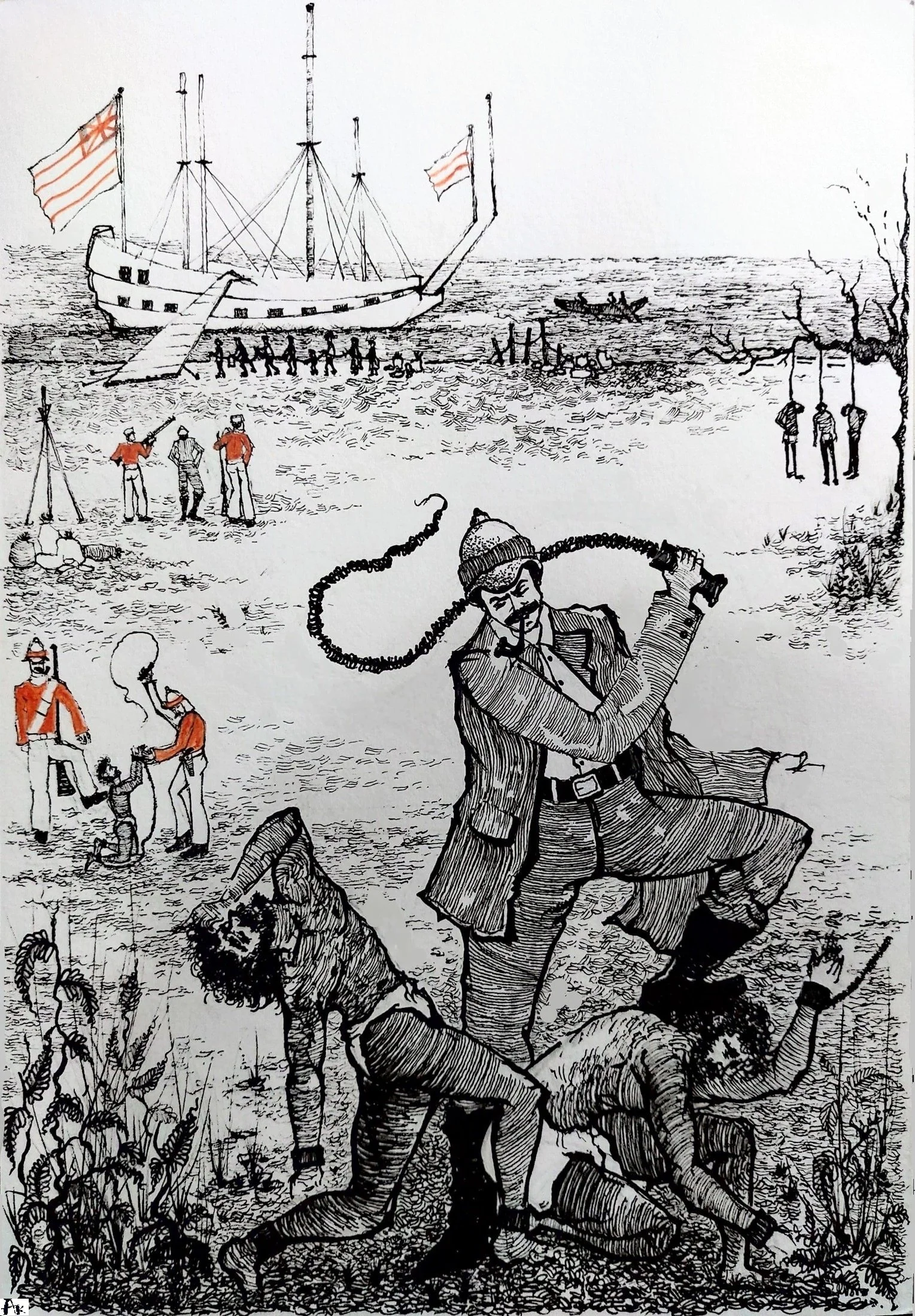
Aster Lit: translatability
Issue 12- Summer 2024
Illustration Series
-Visual Art-
Abhishek Nayak, India
Content Warning: Portrayal of Violent Imagery
Artist Statement:
All these works are based on colonialism in India. Whether the Raj setting up breweries, whether its the torturous journey of indentured laborers from India, coffee houses in summer capitals, inhuman violence during 1858 revolt and other socio political issues. All these adhere to the theme of translation of cultural ethos. An amalgamation yet translation of languages, culture, politics, economics etc of British Raj and Indians. Translation leads to mixing up of many elements yet also leads to revolts and resistance. The colonial Raj in India best exemplies the translation or lost in translation.
Colonial Carriage
Palanquin bearers giving the British officer, who’s on a hunt for South Asian jewelry, a tour of the local market. For the colonial masters, Indian culture and its intricacies, including craft, clothing, delicacies and jewelry, was completely alien.The work here portrays a sense of alienation and awe in a foreign land.
Brewed in Hills
Wine distilleries by colonial masters started in Kasauli back in the 1850s. Wine took up the interwar years and started entering Indian homes and British mansions, casting a new cultural and economical space in India through industrial escalation along with cultural shifts during colonial years and further. Wine, as a part of drinking delicacy, portrays how food can be an element depicting translatability.Depicting wine as an element within the ambit of british colonialism, this work tries to bring forth how food and beverages (wine,tea,bakery items etc.) also got introduced during this colonial time, propelling a change in the cultural space.
Coffee Houses & Colonialism
By 1864, Shimla was officially tagged the Imperial summer capital. Often known as Little England, it was a center of power and pleasure. Along with garden fetes, feasts and polo games, it also saw some of the most pivotal decisions like Anglo-Afghan wars, Durand line plan, etc. These little family-owned coffee houses all over India made a perfect joint for viceroys, officials and military attaches to hover around the ongoing Imperial discussions. These houses saw the birth and break of many such plans of the Raj. This, in a way, showcases the cultural dynamism embodied in colonial India.
The retribution
The British wanted a brutal and exemplary mass execution of Sepoys and rebels during 1857. They found it by blowing them up from a canon. The 1857 Revolt was a turning point in Colonial India where the Sepoys played a momentary role of protest against the British Stronghold. In turn, the retribution by the masters was a horrifying and heinous showcase of power against the Sepoys.
Tortured & Indentured
Indentured laborers (girmityas) are being transported from somewhere near the Bombay coast to the West Indies. They were hanged, whipped, chained and dragged if they resisted. It was a horrifying journey of a hoodwinked contract. The Indentured Labour System in Colonial India is portrayed as a harrowing tale of laborers in India who were transported to many foreign lands including West Indies under a vicious cycle of violence and brutality, from start to finish.
"Illustration is the best way to experience a dream without sleeping"
Abhisek Nayak wrote this random quote years back as a teenager, but grasped its subtle essence gradually. He feels we can actually freeze time as well as express ourselves through the process of creating art.
It all started for him when he was a kid and used to make random sketches of bikes and superheroes on any piece of paper he could grab, while his parents added the encouraging ingredient to it.
Gradually, exploring the works of Mario Miranda and Ralph Steadman, He fell in love with conventional noir pen and ink illustration , which he felt is supremely stylish. Diving into the history of Colonial India to find the intricacies of cultural, political and environmental elements that shaped our present, he felt that representing these elements graphically can bloom these subjects in a glaring way.

